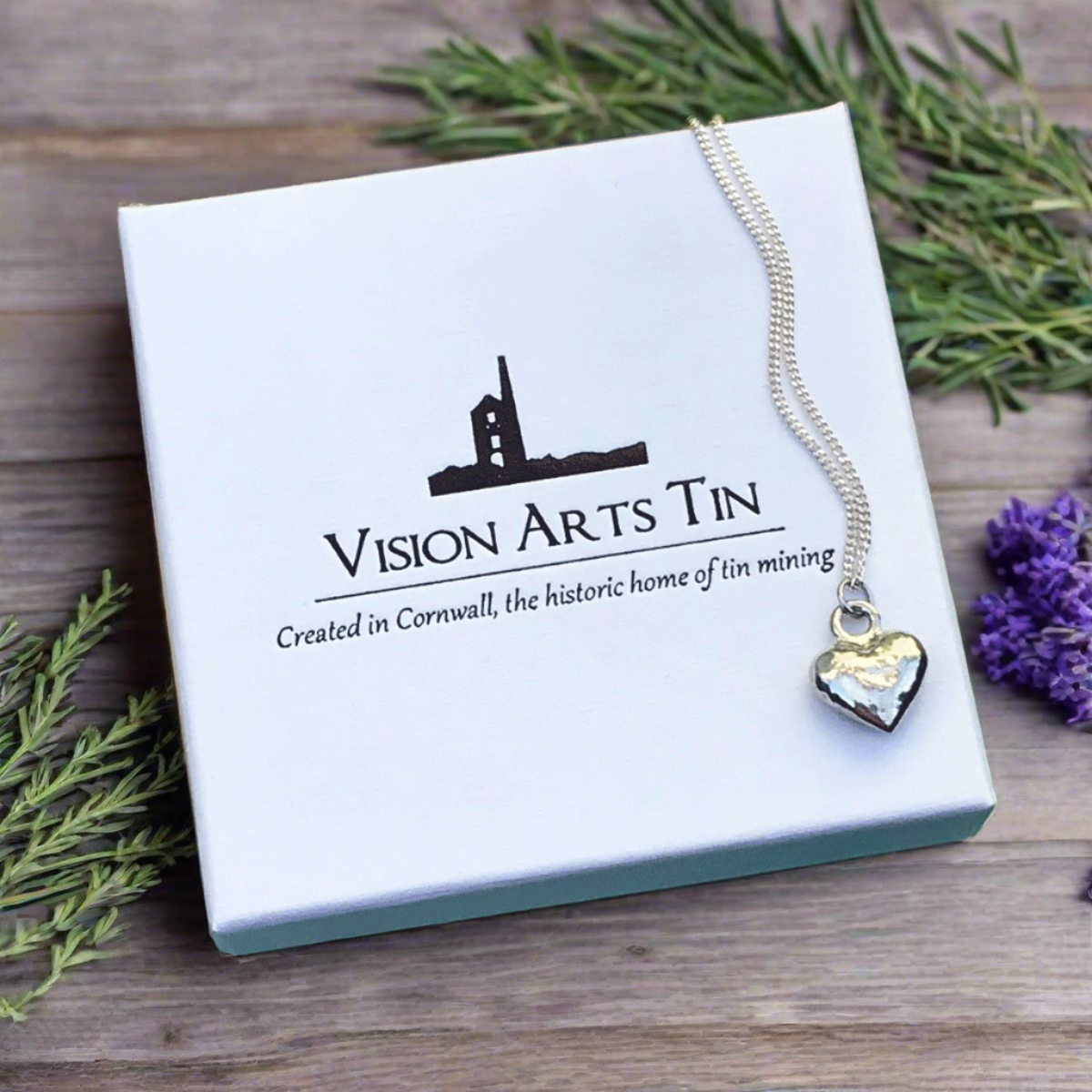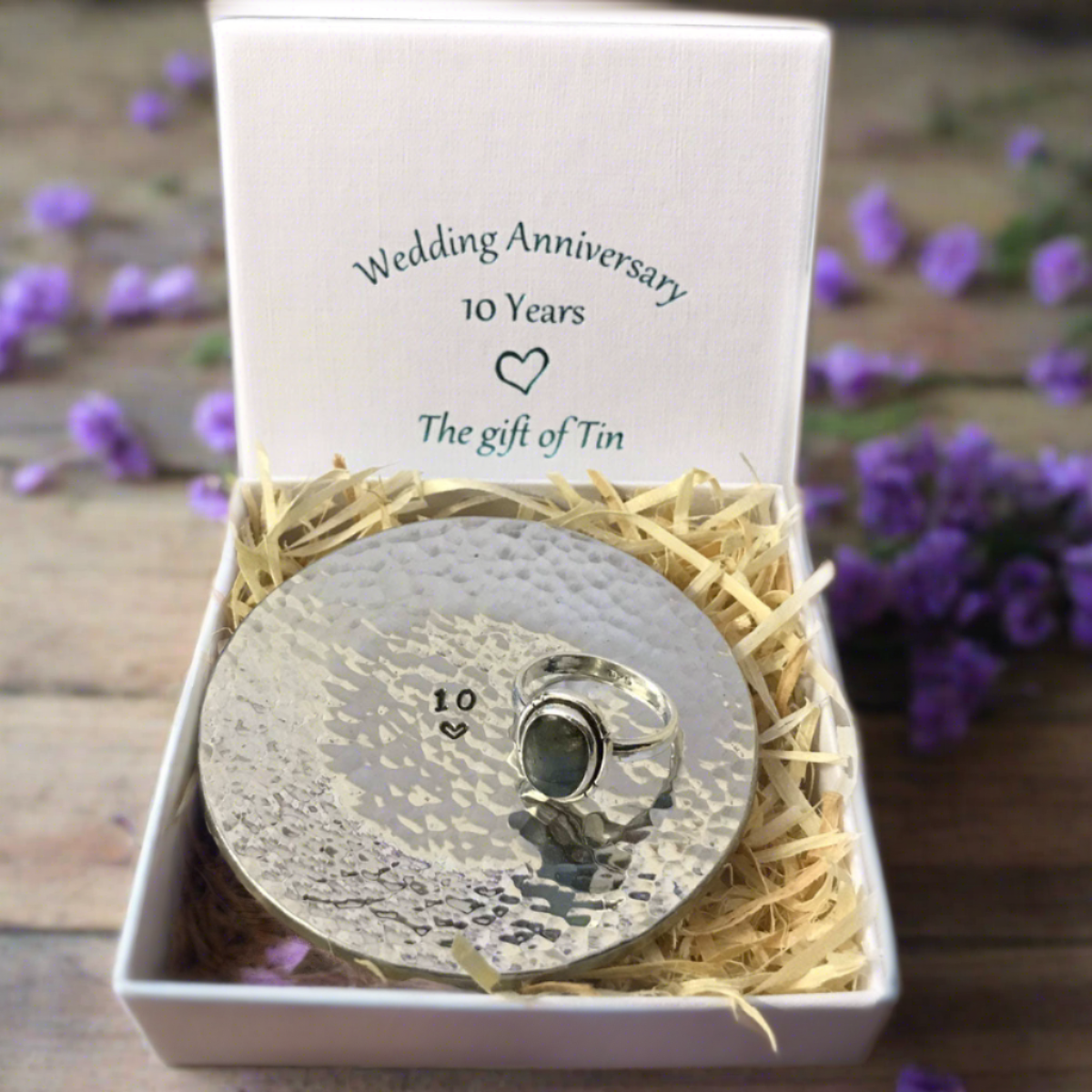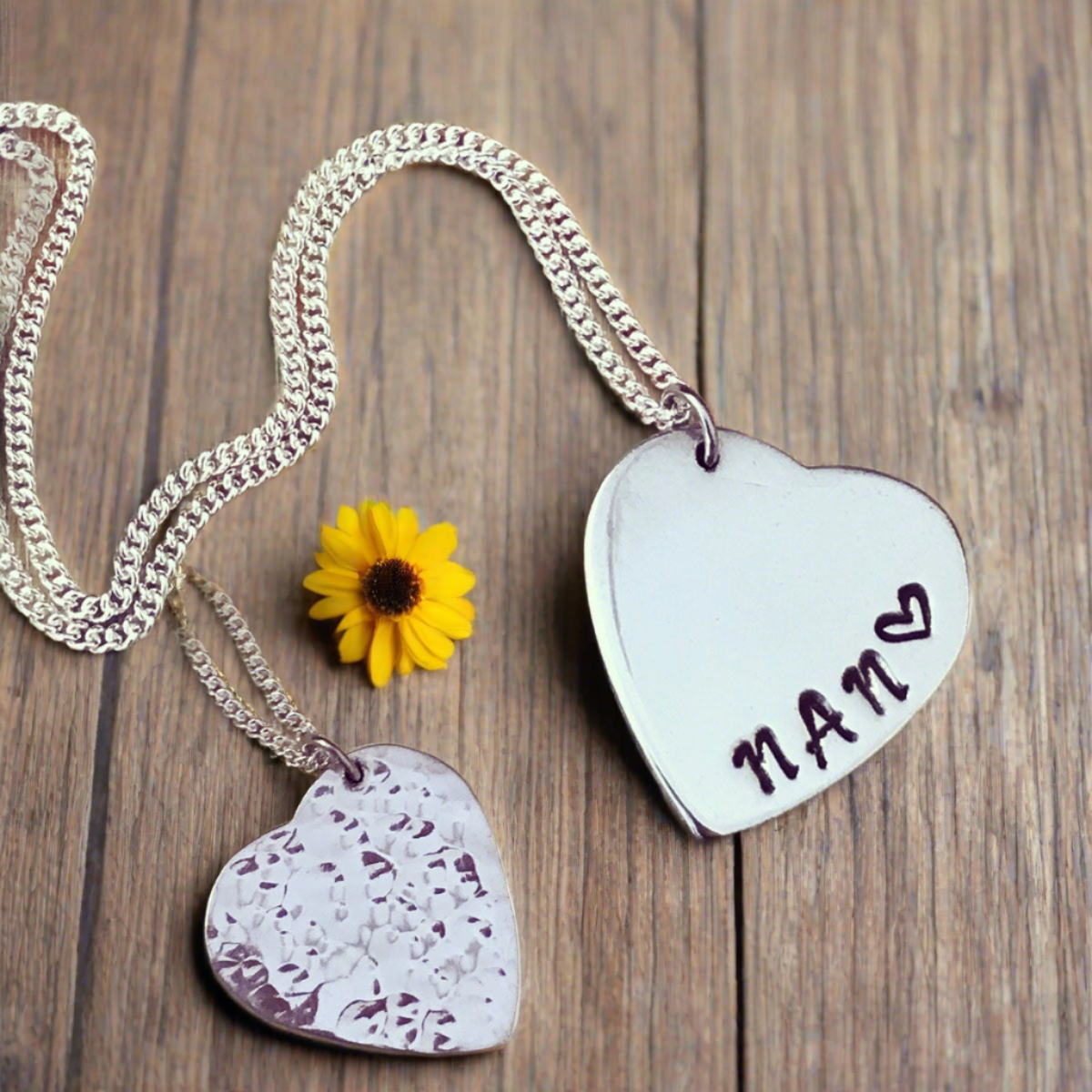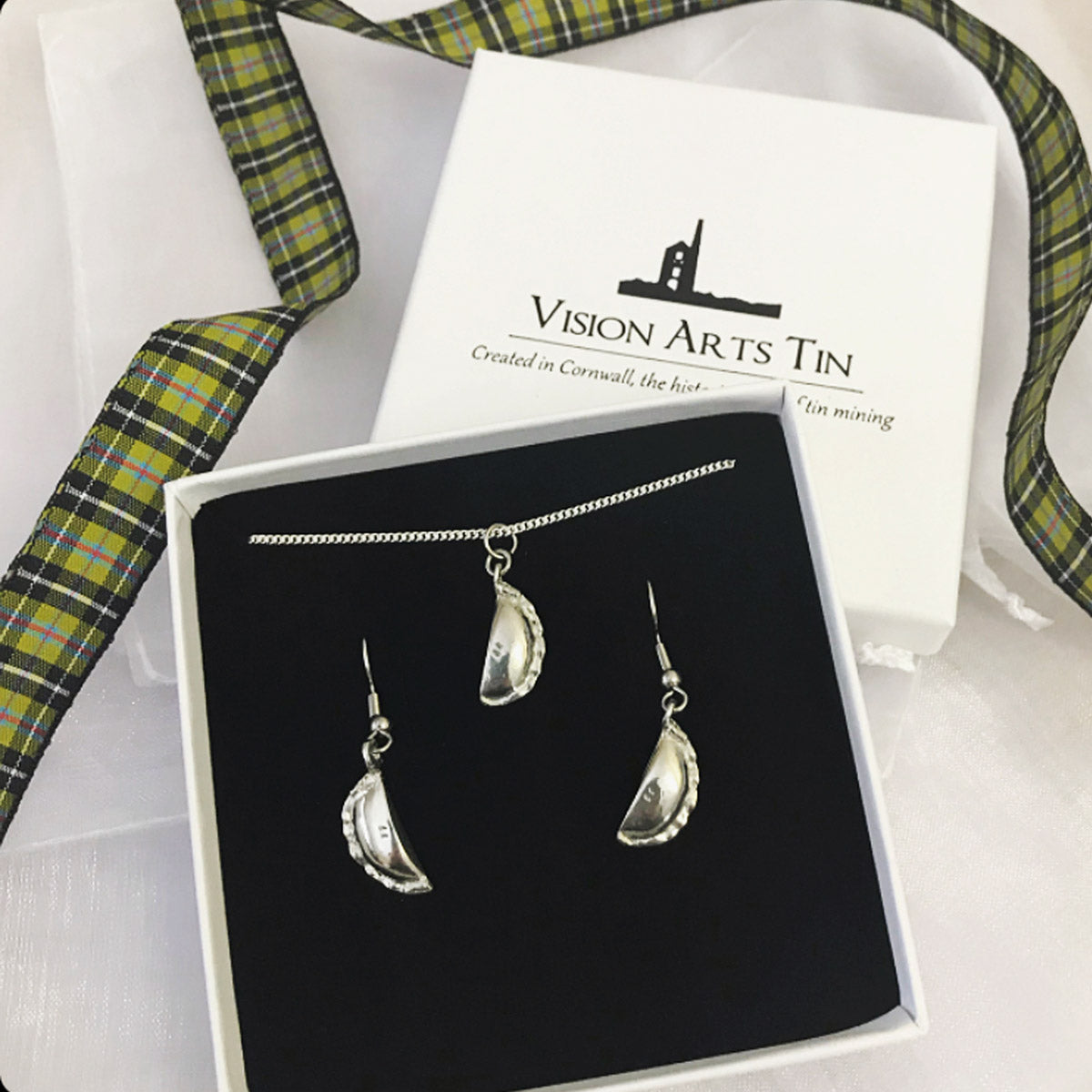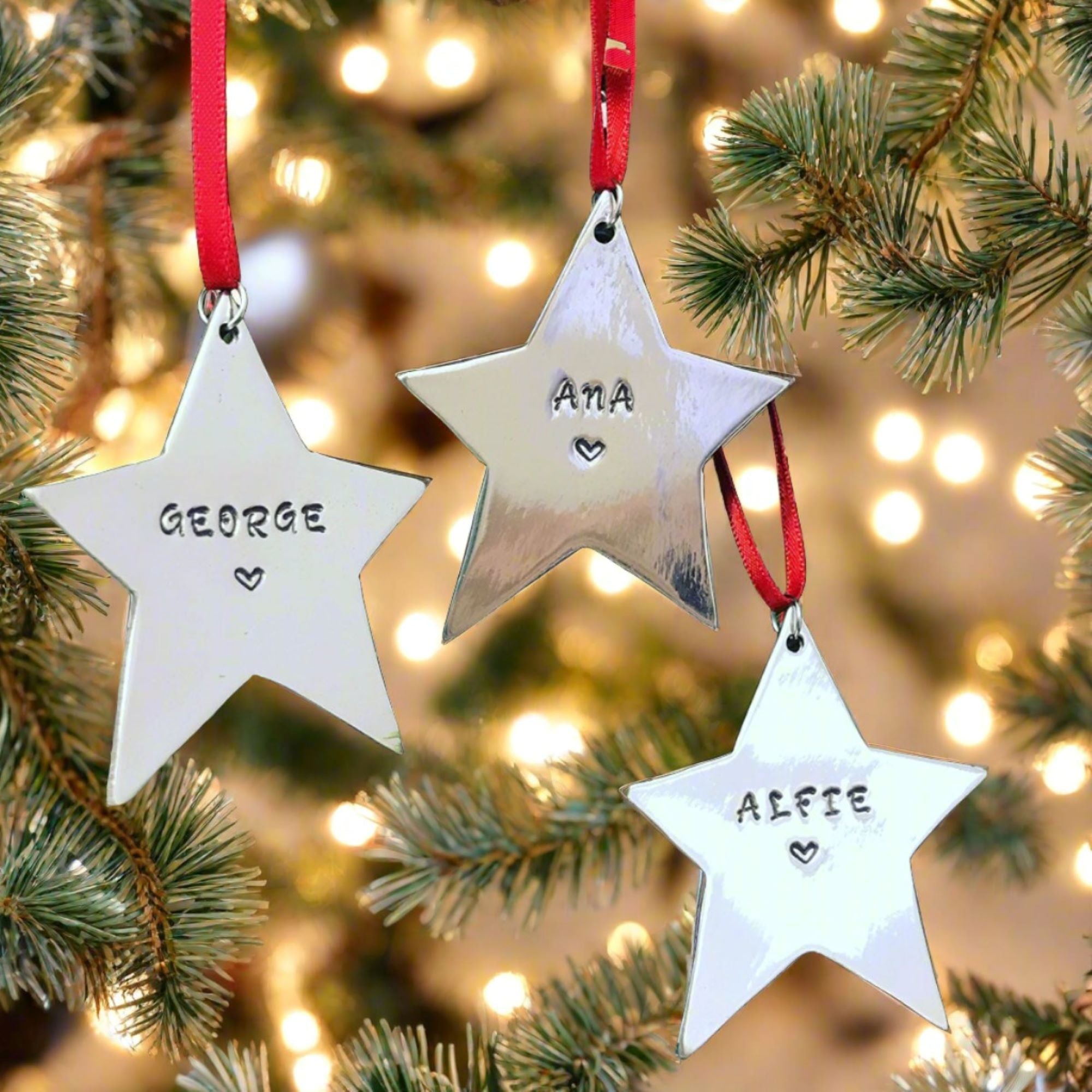Cornish Christmas Decorations
Handcrafted Personalised Christmas decorations, made to last a lifetime.
Welcome to our collection of Personalised Christmas Decorations. Every single decoration is individually handcrafted in our Cornish workshop.
Our Personalised Christmas Decorations will come gift boxed, making them the perfect gift or keepsake to treasure for years to come.
From Personalised Christmas Stars, to 'My First Christmas' Decorations and of course our wildly popular Regional Star Collection, hand stamped, in Cornish, Welsh, and both Irish & Scottish Gaelic.
Traditional Tin Casting
It all starts right here… The melting pot is heated to around 270 degrees to enable the metal to melt. A vulcanised rubber mould is then placed inside the machine, which is then switched on, and set to spin between 400-700 RPM, depending on the size of the mould and castings. The melted metal is then ladled into the moulds via a small opening in the centre of the machine lid. The casting machine then spins rapidly for around 45 seconds before it comes to a halt. Then after a few moments, using a (gloved!) hand, the mould can be removed from the machine and opened. Inside are the solid castings, ready for the next stage of the journey
Polishing
We use a number of polishing methods, depending on the size and use of the item in question. An intial fettle to clean up any edges will take place using a belt linisher. Next, a scotchbrite wheel with a course abrasive compound removes any lingering casting residue and results in a uniform surface with a satin finish. Finally, to obtain a stunningly high shine, we use a polishing compound with an open stitch swansdown mop. Once the last machine polish has taken place, every piece receives a hand polish using a blue silver cloth to remove any polishing compound and to check for faults or imperfections.

